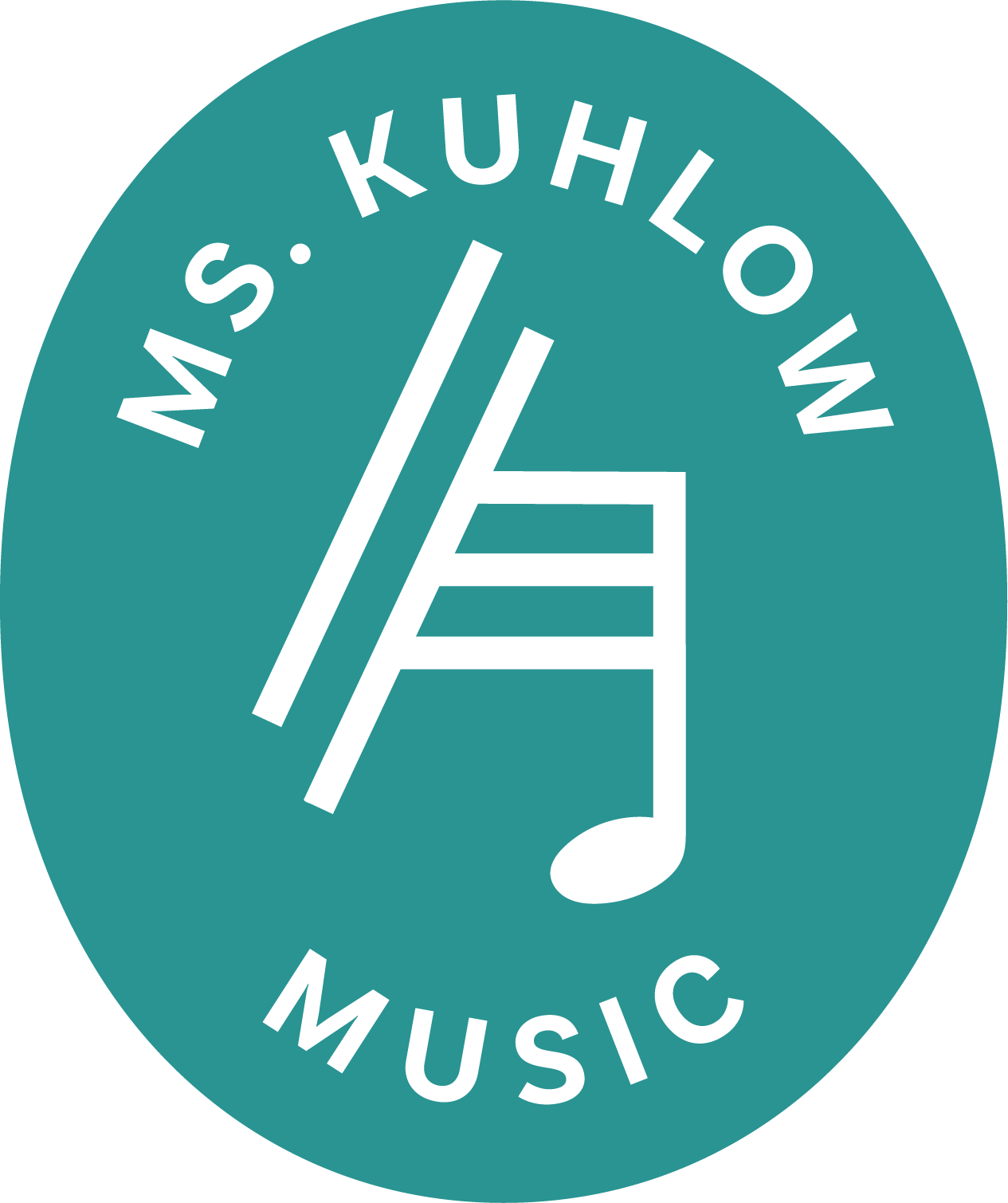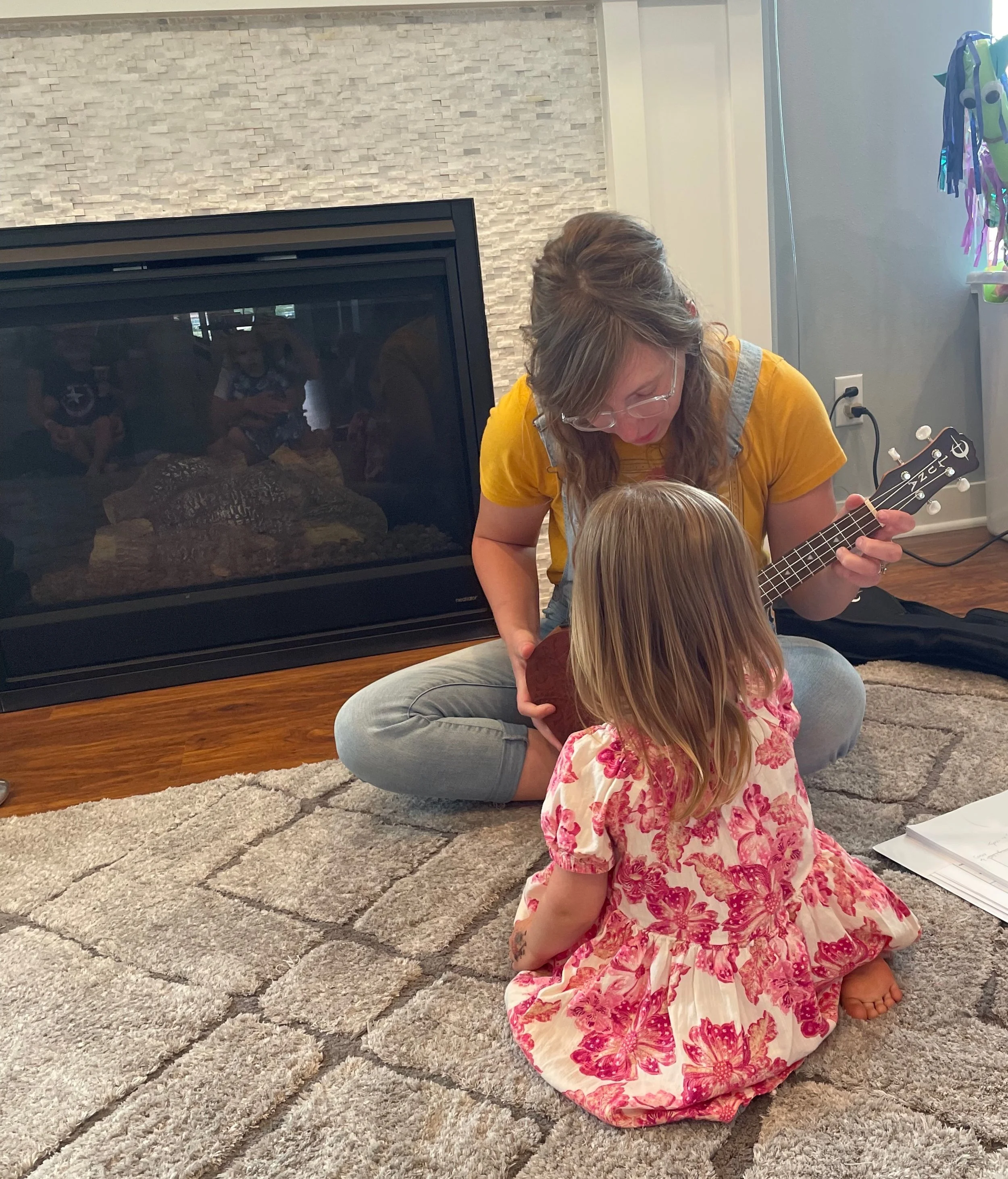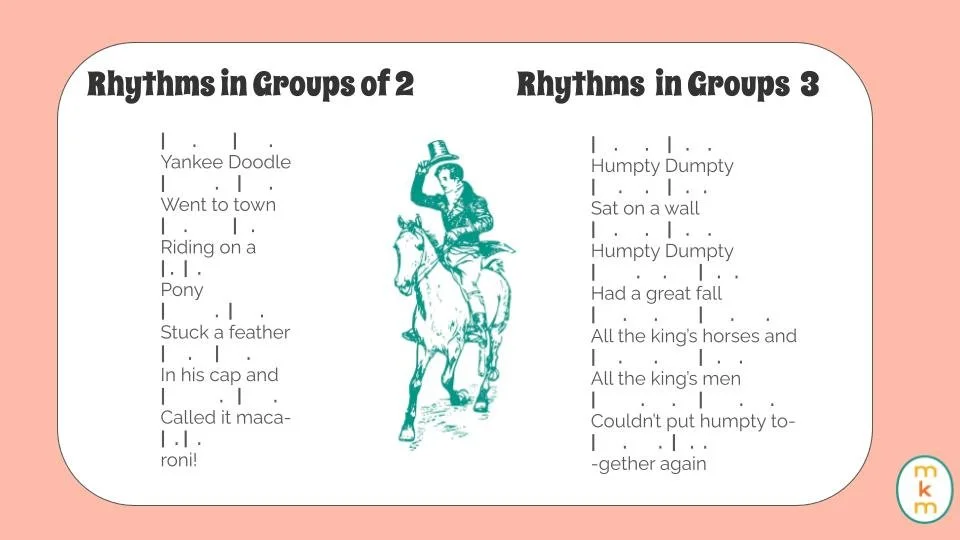I've Got the Rhythm!
I’ve Got Rhythm!
What is the difference between "beat" and "rhythm"?
"Beat" can be likened to the pulse of the music, just like the pulse of a heartbeat! Music can have strong beat, weak beat, even no beat.
A strong beat would be something like a march in which it is easy to tap your foot along to.
You may find a weaker beat in something like a ballad in which you can feel the pulse of the music but you wouldn't necessarily stomp your feet along.
Music with no beat is something that you may find in movies as background music that you are not supposed to really pay attention to.
"Rhythm" is defined as the order of placement of sounds in time OR as patterns of sounds.
Rhythms can be found by tapping out the melody of a song; tap while you sing/say "Yankee doodle went to town" and you've found the rhythm of the song.
When we think of a drum circle, we think of many players playing different rhythms but they are all connected by the beat!
Sometimes the two are interchangeable, sometimes they are not!
We are born with what we can call "inner beat". A child's inner beat is what they naturally display when they bounce, clap, tap, and move without external prompts.
We develop familiarity with rhythmic patterns through simple songs, nursery rhymes, and familiar music. In time, we remember those patterns and they become a part of our rhythmic vocabulary!
With practice, we are able to adapt to an external beat and perform rhythmic patterns with others.
We are not necessarily born with that ability, but many of the activities we take part in as infants, toddlers, and children help us to learn the ability of matching beat.
Here are some tips to help your child develop a good sense of rhythm
(and beat!)
1) Match Their Inner Beat
When singing songs or rhymes with actions to a baby, adjust the tempo (speed) to match the baby's movements. The same goes for when a toddler (or older child) is demonstrating inner beat; whether it is bounces, clapping, tapping, follow their lead!
Their inner beat can be faster than we would expect!
Because we are only focused on beat and not retention of words or melody, don't worry about your child going "too fast". What's a good tempo? 120-136 beats per minute (here is an example of music that is just right for tapping along for a child's inner beat!)
2) Clap With Your Child, Not For Them
Clapping games are great for learning recognizable rhythms and how to clap on a steady beat!
Put your palms out and clap up to your baby or toddler's hands for clapping games. Using your hands to clap a baby's hands together does nothing for their development of beat. Teaching a baby to clap their hands together is a great large motor skill (it’s just not helpful for keeping a beat). For more tips on teaching a baby to clap, I’ll refer to “How To Dad”:
3) Demonstrate A LOT
Children need MANY examples of externalizing steady beat (seeing, hearing, and feeling) before they are able to externalize. Toddlers will gradually observe then imitate their parents/adults as long as they are given many opportunities. Older children may need reminders of "me first, then you" so they can be focused on their observation.
After many examples of hearing, seeing, and feeling a steady beat for a song, children can externally demonstrate beat on an instrument while an adult matches their beat with voice!
4) Body Percussion First!
Children should master demonstrating their "inner beat" with their hands and body movements BEFORE adding any instrument. Playing with an instrument before this mastery is only an exploration of the sound being created not a demonstration of beat keeping ability. Of course children should explore the sounds of different instruments (rattles for babies!) but with no expectation of playing along with a recording or keeping a steady beat for a rhyme.
5) Challenge Them with Variety
Use rhymes, songs, activities that have a variety of rhythms, beat, and meter. When a child is comfortable demonstrating a steady beat with their inner beat, encourage them to increase or decrease tempo (speed) or to match your beat!
Nursery rhymes often vary in meter and rhythm! Make sure to use a story telling voice!
Want some more tips and techniques on developing beat for your little ones?
Fall Class Sign Up starts in August as well as some free preview classes in September!
Stay tuned or reach out for more information!


